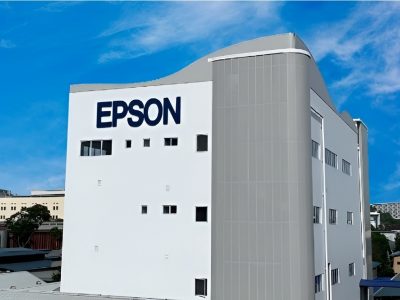The Intersection of Fine Art and Technology

Technology is influencing every aspect of our world and all our normal processes are becoming digitised. In art, this relationship takes on many forms across the industry. Artists today are increasingly finding new ways to bring their creative visions to life, incorporating technology into their printmaking methods similar to art pioneers of the past. Galleries are also adopting new approaches to displaying pieces that can reach more people, while auction houses are modernising how art is authenticated and sold.
When discussing the biggest art trends of the past year, the Hong Kong Tatler noted that digital art was, “completely utilised by artists, galleries and art collectives as they experiment on ways they can continue to create art that’s boundless and limitless.” This has opened doors to a myriad of possibilities to explore how technology and art may intersect with digital at the centre.
Digital printing in fine art
Within this landscape, modern printing processes are also contributing to bold reproductions of digital art pieces. Art can be designed and created with artistic software or an original piece can be scanned at a high resolution before printing. The digital printing technology that has evolved alongside innovations in the art world is enabling artists to produce high-quality, sharp and vibrant images with minimal ink or paper waste. Inkjet printers that do giclee printing, or archival digital printing, remain the preferred method for fine art printing. This giclee printmaking process ensures that the substrates do not degrade or make the print fade over time and is essential for professionals offering fine art printing services.
The evolution of digital printing has also made it possible for print shops to produce images on a wider array of materials and paper types, including canvas, metal, vinyl, and acrylic, as well as sizes ranging from 24 to 44 inches, without compromising print quality. This allows artists to take a harder look at the ecological ramifications of the materials they are using and stretch their creative output. Technology empowers them to reduce waste during the creative process and accomplish their intended results with reusable or recyclable substrates as well as environmentally-friendly ink.
With the latest Epson SureColor printer models, professionals can deliver exceptional quality photo prints in a fraction of the time it took older models. These printers, which are designed for high-quality print production, can deliver panoramic photos, large format images and extend to fine art production. This expands the types of jobs that printing companies can accept in a highly competitive market. Epson is also committed to promoting the art of photography through the creation of the imaging gallery epSITE in Japan. Visitors can use Epson printers to digitally print their artwork and also exhibit the pieces in the gallery. The site also holds seminars and programs to remind people of the joy that beautiful, high resolution prints give viewers.
Technology is continuing to advance and deepen its impact on the art world. As ArtDex notes, “from AI (Artificial Intelligence), VR (virtual reality) and AR (augmented reality) to digital designs and 3D printers, technologies and social media have disrupted the contemporary art and art market in so many different ways.” Digital printing technology is contributing to the vibrancy and boldness of digital print reproductions for art exhibits with advanced printhead technology on easy-to-use machines that also accommodate a wider range of business needs with less waste.
Posts You May Like
Get Social With Us



